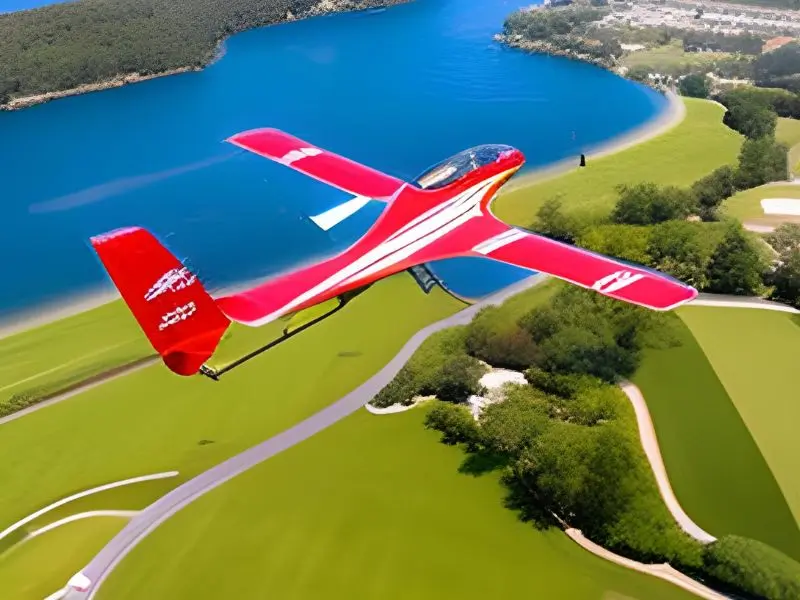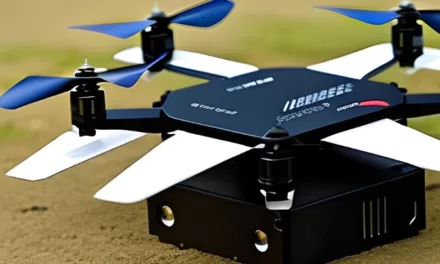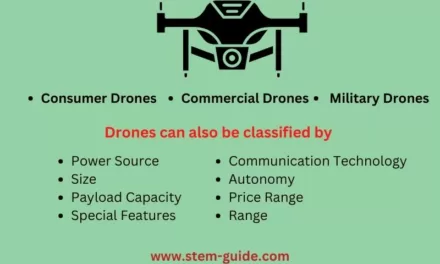Aeromodelling Tips: Aeromodelling, the art of designing, building, and flying model aircraft, brings joy and excitement to enthusiasts around the world. It is a captivating hobby that allows individuals to experience the thrill of flight without leaving the ground.
Whether you’re a novice or an experienced aeromodeler, these top 10 aeromodelling tips will help you achieve successful flights and improve your skills in this exhilarating pursuit.
I. Choose the Right Model
Selecting the appropriate model for your skill level and interests is crucial in the world of aeromodelling. Various types of models, such as gliders, trainers, and acrobatic planes, cater to different preferences and proficiency levels.
Consider factors like your experience, available flying space, and desired flight characteristics when making your choice. Opt for a model that aligns with your goals and sets you up for success from the start.
II. Read and Understand the Manual
Before diving into the assembly process, take the time to carefully read and comprehend the provided manual. The manual serves as your essential guide, detailing the correct assembly steps and crucial safety information.
Make sure to follow the instructions meticulously, noting any specific tips or warnings. Understanding the manual thoroughly ensures you’re on the right track for a rewarding aeromodelling experience.
III. Assemble with Precision
Creating a model aircraft demands precision and patience. Set up a clean and organized workspace, where you can meticulously piece together each component. Delicate assembly tasks may require the use of specialized tools, so invest in quality equipment to make the process smoother.
Taking the time to assemble your model with precision lays the foundation for a well-functioning and stable aircraft.
IV. Balance and Center of Gravity
Achieving the right balance and center of gravity is vital for optimal flight performance. Improper balance can lead to instability and erratic flights. Use a balancing stand to check the model’s balance, adjusting as necessary to ensure it rests evenly on its main wheels.
Additionally, locate the center of gravity according to the manufacturer’s specifications and make adjustments if needed, ensuring a smooth and controlled flight.
V. Importance of Quality Materials
Investing in high-quality materials and components is a wise decision in aeromodelling. Durable materials contribute to the model’s longevity and improve overall performance. Research and choose reliable components, such as quality servos, motors, and batteries, to enhance your aircraft’s capabilities and make your flights more enjoyable.
VI. Aerodynamics and Design
Aerodynamics plays a pivotal role in determining how an aircraft performs during flight. Understanding the basic principles of aerodynamics, such as lift and drag, will help you tailor your model’s design for improved efficiency and stability.
Experiment with wing shapes, airfoils, and fuselage designs to find the optimal configuration that suits your desired flight characteristics.
VII. Understanding Flight Controls
Knowing the different flight controls and how they affect the aircraft’s movements is essential for safe and enjoyable flying. Familiarize yourself with the control surfaces, such as ailerons, elevators, and rudders, and learn how to calibrate and test them effectively. Properly functioning and calibrated controls are key to maneuvering your model with precision.
VIII. Safety Measures
Safety should always be a top priority in aeromodelling. Protect yourself and others by adhering to safety guidelines and using appropriate safety gear. Before each flight, perform pre-flight safety checks, inspecting components, control linkages, and power systems to ensure everything is in good working order. Taking the necessary precautions will help prevent accidents and protect your investment.
IX. Practicing Flight Techniques
As the saying goes, “Practice makes perfect.” Regular practice is crucial for mastering flight techniques and building confidence as an aeromodeler. Start with basic flight maneuvers, such as take-offs, turns, and landings, and gradually progress to more advanced maneuvers.
The more you practice, the better you’ll become at controlling your model and performing impressive aerial displays.
X. Troubleshooting and Maintenance
Even the most experienced aero modelers encounter challenges and occasional malfunctions. Familiarize yourself with common issues that may arise during flight and learn the corresponding troubleshooting techniques.
Additionally, establish a regular maintenance routine to keep your model in top condition, ensuring it remains reliable and ready for action.
XI. Weather Considerations
Weather conditions significantly impact your flight experience. Wind, temperature, and humidity affect how your model behaves in the air. Be mindful of weather forecasts and choose suitable flying conditions. Mild winds and clear skies provide a more stable environment for flying, while strong winds and adverse weather conditions can be hazardous.
XII. Recording and Analyzing Flights
Keep a flight log to record important details about each flight, such as flight duration, weather conditions, and any issues encountered. Analyzing flight data allows you to track your progress, identify trends, and make informed decisions for future flights and modifications. It’s a valuable tool for continuous improvement in aeromodelling.
XIII. Joining Aeromodelling Communities
Being part of aeromodelling communities and clubs opens doors to a wealth of knowledge and experience. Interacting with other enthusiasts allows you to learn from seasoned modelers, exchange ideas, and discover new tricks and techniques. Embrace the camaraderie and support within the community as you embark on your aeromodelling journey.
XIV. Taking Part in Competitions
Competitions provide a fantastic opportunity to challenge yourself and showcase your skills as an aero modeler. Participating in contests not only adds excitement to the hobby but also helps you gauge your progress and learn from other participants. Embrace the thrill of competition and strive for personal growth with each event you attend.
XV. Modifying and Upgrading
As you gain experience, you may feel inclined to customize your model to suit your preferences and enhance its performance. Experiment with modifications and upgrades to explore new possibilities and tailor your aircraft to your flying style. Remember to document your changes and analyze their impact on flight performance.
XVI. Troubleshooting Tips for Beginners
For newcomers to the world of aeromodelling, encountering challenges is a natural part of the learning process. Address common issues faced by beginners, such as difficulties with take-offs or maintaining steady flight paths. Seek guidance from experienced modelers or online resources to overcome these obstacles and grow as an aeromodeller.
XVII. Embracing Challenges and Learning from Failures
In aeromodelling, as in life, challenges and failures are valuable learning opportunities. Embrace these experiences with a growth mindset, understanding that mistakes are stepping stones to improvement. Analyze what went wrong, seek solutions, and persist in your pursuit of mastering aeromodelling.
XVIII. Contributing to the Aeromodelling Community
As your skills and knowledge grow, consider giving back to the aeromodelling community. Share your experiences, tips, and tricks with fellow enthusiasts. Inspire and encourage newcomers to the hobby and contribute to the collective knowledge that makes aeromodelling an ever-evolving and exciting pursuit.
Conclusion
Aeromodelling is a captivating hobby that offers endless opportunities for joy and learning. By applying these top 10 aeromodelling tips, you’ll embark on a rewarding journey of exploration and growth.
Remember to choose the right model, read the manual diligently, assemble with precision, and understand the principles of aerodynamics. Embrace challenges, practice regularly, and prioritize safety.
Join the aeromodelling community, take part in competitions, and never stop learning and improving. With dedication and enthusiasm, you’ll soar to new heights in the world of aeromodelling.
Happy flying!
Top 10 Aeromodelling Tips: FAQs
What are the top 10 tips for successful aeromodelling?
Example: The top 10 aeromodelling tips encompass choosing an appropriate model, thoroughly understanding the assembly manual, assembling with precision, and consistently practicing flight techniques.
How do I choose the right model for aeromodelling?
Example: When selecting a model for aeromodelling, take into account factors like your skill level, available flying space, and the type of flying experience you desire. For beginners, a stable trainer model like the “HobbyZone Sport Cub S” is an ideal choice.
What factors should I consider when selecting an aeromodelling model?
Example: Factors to consider include the type of model (glider, trainer, acrobatic), size, construction material, and power source (electric or nitro).
Where can I find a comprehensive manual for assembling my model aircraft?
Example: Most manufacturers provide detailed manuals with their model kits. Additionally, you can find downloadable manuals on their official websites.
How important is it to read and understand the manual before assembling?
Example: Reading and comprehending the assembly manual are vital to ensure accurate construction and prevent potential flight issues.
What are some tips for comprehending complex aeromodelling instructions?
Example: To understand complex instructions better, break down each step, refer to online tutorials, or seek guidance from experienced aeromodellers in forums or clubs.
How can I ensure precision during the assembly process?
Example: You can ensure precision during assembly by using small, accurate tools, adhering to measurement guidelines, and maintaining an organized workspace.
What are some techniques for delicately assembling model components?
Example: Delicate assembly techniques involve using tweezers or small pliers to handle small parts, such as control linkages, with precision and care.
Why is achieving the right balance crucial for a successful flight?
Example: Achieving the correct balance is essential for stable flight and prevents the model from being nose or tail-heavy, which could lead to potential crashes.
How do I locate and adjust the center of gravity for my model aircraft?
Example: To locate the center of gravity, use a balancing stand or follow the manufacturer’s instructions. Adjust by adding or removing weights to achieve the ideal balance point.
What materials should I invest in for high-quality aeromodelling?
Example: Investing in high-quality materials, such as balsa wood, carbon fiber, or durable plastic, ensures the construction of a sturdy and reliable model.
How does the choice of materials affect the performance of the model?
Example: Lighter materials like foam or balsa wood contribute to better agility and maneuverability, while heavier materials may provide stability for windy conditions.
Can you explain the basics of aerodynamics in aeromodelling?
Example: Aerodynamics in aeromodelling refers to how air interacts with a moving object, affecting its lift, drag, and stability during flight.
How can I tailor the design of my model for optimal flight performance?
Example: To optimize flight performance, experiment with different wing shapes, airfoil designs, and fuselage configurations to find the most efficient combination.
What are the different flight controls and how do they work?
Example: Flight controls include ailerons (for roll), elevators (for pitch), and rudders (for yaw). They work by adjusting the model’s orientation in the air.
How do I calibrate and test the flight controls on my model aircraft?
Example: Calibrate and test the flight controls using your radio transmitter to ensure each control surface moves freely and in the correct direction without any binding.
What safety measures should I take before flying my model?
Example: Before flying your model, conduct safety checks to inspect all components for damage or loose connections, secure batteries properly, and perform range checks.
What are some pre-flight safety checks I should perform?
Example: Pre-flight safety checks should include examining the control surfaces, landing gear, and power system, as well as verifying proper receiver-transmitter connections.
How important is a regular practice for improving aeromodelling skills?
Example: Regular practice is essential for honing flying skills, improving coordination, and building confidence as an aeromodeller.
What are some essential flight maneuvers I should practice as a beginner?
Example: As a beginner, practice essential flight maneuvers such as take-offs, gentle turns, figure eights, and landings to build a strong foundation for advanced maneuvers.
How do I troubleshoot common issues during aeromodelling flights?
Example: To troubleshoot common issues during flights, identify potential problems like uneven flight or drifting and adjust control surface throws or check balance and trim settings.
What are some maintenance tips to keep my model aircraft in top condition?
Example: To keep your model aircraft in top condition, regularly inspect and clean it, lubricate moving parts, and replace worn-out components when necessary.
How does weather affect aeromodelling flights, and what conditions are ideal?
Example: Weather significantly impacts aeromodelling flights. Ideal conditions include low wind speeds and clear skies, as strong winds or adverse weather can affect flight stability.
Should I keep a flight log, and what information should it include?
Example: Keeping a flight log is beneficial for tracking flight data such as date, weather conditions, flight duration, and any encountered issues for analysis and improvement.
How can I analyze flight data to improve my aeromodelling skills?
Example: Analyzing flight data from your flight logs helps identify patterns, improve flight maneuvers, and troubleshoot recurring issues for better overall performance.
How do I connect with other aeromodellers and join the community?
Example: Connect with other aeromodellers by joining aeromodelling clubs, attending local events, and actively participating in online forums or social media groups.
What are the benefits of participating in aeromodelling competitions?
Example: Participating in aeromodelling competitions offers opportunities to showcase your skills, learn from others, and challenge yourself, fostering growth as an aeromodeller.
How can I modify and upgrade my model aircraft for better performance?
Example: Improve your model’s performance by considering upgrades like a more powerful motor, higher-quality servos, or customizing the design for enhanced aerodynamics.
What are some troubleshooting tips specifically for beginners?
Example: Beginners can seek guidance from experienced modelers to troubleshoot common issues like unstable flight or control problems, and learn effective solutions.
How can I turn challenges and failures into learning opportunities in aeromodelling?
Example: Embrace challenges and failures as learning opportunities, analyze mistakes, and use the experiences to become a more skilled and confident aeromodeller.




